Exercise – 4.1
1. Use the figure to name :

(1) Five points
(2) Aline
(3) Four rays
(4) Five line segments
Solution: (1) Five points : O, B, C, D, E
(2) A line: DB
(3) Four rays.: OD, OE,OC, OB
(4) Five line segments: DE, OE, OC, OB, OD
2. Name the line given in all possible (twelve) ways, choosing only two letters at a time from the four given.

Solution: Possible lines are AB, AC, AD, BC, BD,CD, BA, CA, DA, CB, DB, DC
3. Use the figure to name:
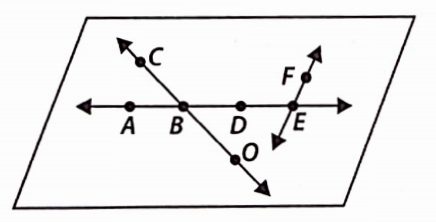
(1) Line containing point E.
(2) Line passing through A.
(3) Line on which O lies
(4) Two pairs of intersecting lines.
Solution: (1) A line containing point £ is AE.
(2) A line passing through A is AE.
(3) A line on which O lies is CO or OC
(4) Two pairs of intersecting lines are AD, CO and AE, FE
4. How many lines can pass through (1) one given point? (2) two given points?
Solution: (1) Infinite number of lines can pass through one given point.
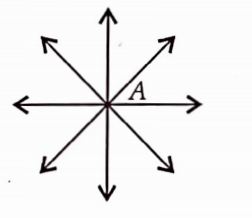
(2) Only one line can pass through two given points.

5. Draw a rough figure and label suitably in each of the following cases:
(1) Point Plies on AB.
(2) XY and PQ intersect at M.
(3) Line/ contains E and F but not D.
(4) OP and OQ meet at O.
(1). 
(2). 
(3). 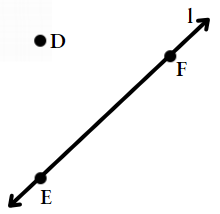
(4). 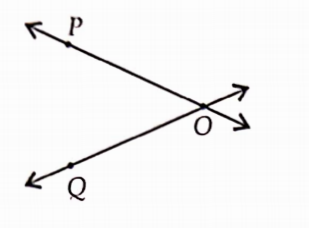
6. Consider the following figure of line IVIN. Say whether following statements are true or false in context of the given figure.

(1) Q, M, 0, N, P are points on the line MN.
(2) M, 0, N are points on a line segment MN.
(3) M and N are end points of line segment MN.
(4) O and N are end points of line segment OP.
(5) M is one of the end points of line segment QO.
(6) M is point on ray OP-
(7) Ray OP is different from ray QP.
(8) Ray OP is same as ray OM.
(9) Ray OM is not opposite to ray OP.
(10) 0 is not an initial point of OP.
(11) N is the initial point of NP and NM
Solution: (1) True
(2) True
(3) True
(4) False
(5) False
(6) False
(7) True
(8) False
(9) False
(10) False
(11) True
Exercise – 4.2
1. Classify the following curves as (2) Open or (3) Closed

Solution: (1) Open curve
(2) Closed curve
(3) Open curve
(4) Closed curve
(5) Closed curve
2. Draw rough diagrams to illustrate the following :
(1) Open curve
(2) Closed curve.
Solution: (1) Open curves :

(2) Closed curves :

3. Draw any polygon and shade its interior.
Solution:
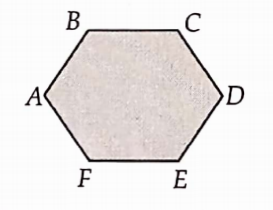
ABCDEF is the required polygon.
4. Consider the given figure and answer the questions :

(1) Is it a curve?
(2) Is it closed?
Solution: (1) Yes, it is a curve.
(2) Yes, it is closed.
5. Illustrate, if possible, each one of the following with a rough diagram:
(1) A closed curve that is not a polygon.
(2) An open curve made up entirely of line segments.
(3) A polygon with two sides.
Solution:
(1) 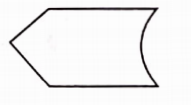
(2) 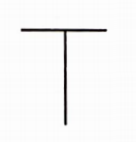
(3) Polygon with two sides cannot be drawn.
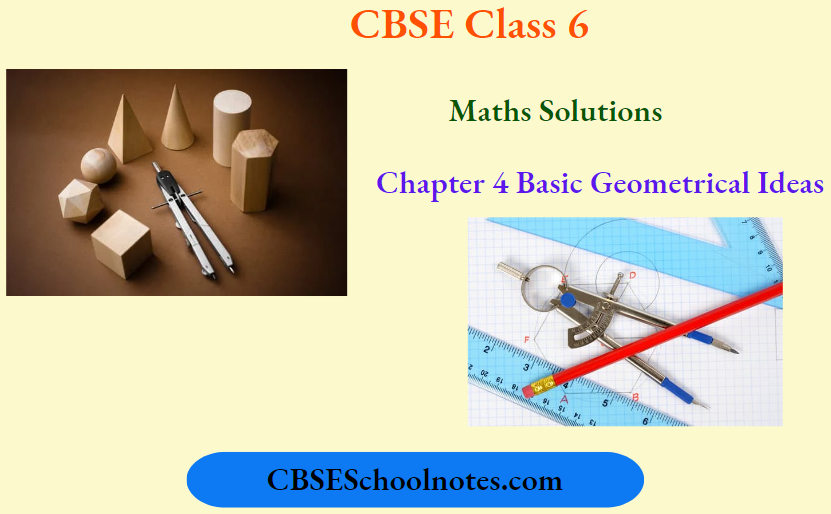
Exercise – 4.3
1. Name the angles in the given figure.
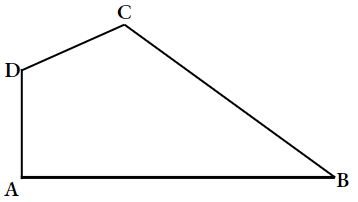
Solution: There are four angles in the given figure i.e, ∠ABC, ∠CDA, ∠DAB, ∠DCB
2. In the given diagram, name the point(s)
(1) In the interior of ∠DOE
(2) In the exterior of ∠EOF
(3) On /EOF
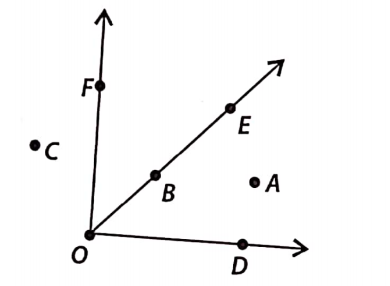
Solution: (1) Point in the interior of ∠DOE : A
(2) Points in the exterior of ∠EOF :C, A, D
(3) Points on ∠EOF : E, O, B, F
3. Draw rough diagrams of two angles such that they have
(1) One point in common.
(2) Two points in common.
(3) Three points in common.
(4) Four points in common.
(5) One ray in common.
Solution: (1) 
Here, two angles are AOd and BOC and point O is common.
(2)
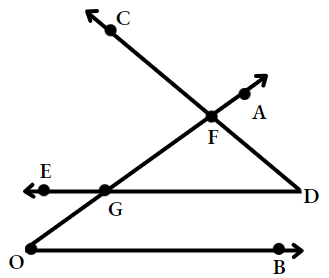
Here, two angles are ∠AOB and ∠CDE and two points F and G are common.
(3)

Here, two angles are ∠AOB and ∠CDE and three points F, D and G are common.
(4)

Here, two angles are ∠AOB and ∠CDE and four points F, G, H and I are common.
(5)
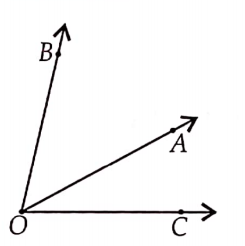
Here, two angles are ∠AOB and ∠AOC and ray OA is common.
